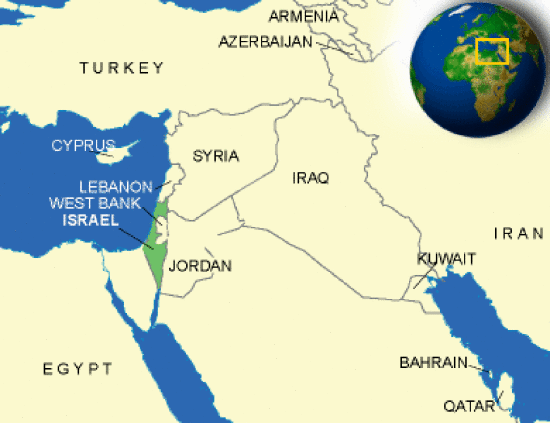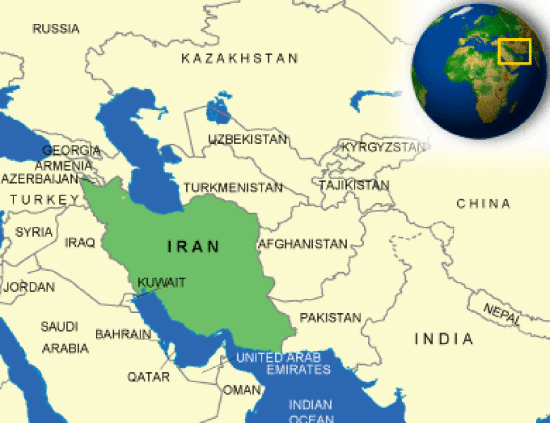Learning Objectives
By the end of this section, you will be able to:
- Describe some examples of how religion relates to identity in Israel and Iran
Introduction
In a most different systems approach, the dependent variable is the same across cases. For this comparative case study, the dependent variable is political outcomes that favor religion. For Iran, it is Shia Islam, whereas for Israel, it is Judaism. How are they dominant in each country? First, the legal codes favor each group (Stern, 2017; Pargoo, 2021). Second, social science evidence suggests that each group has economic access and favorable treatment in the economy. Favoritism and preferences for religious students and for religious education are observable. Finally, there is the role of religious parties or factions in each country’s political system.
Israel is classified as a democracy. Iran is considered an authoritarian regime (Marshall & Elzinger-Marshall, 2017) For political economy type, Israel is a liberal market economy. Iran is a non-market economy, often understood as an emerging market, where market forces are either largely absent or are in the early development phase. In most emerging markets, patrimonialism is the key feature. In other words, a patron-client relationship exists where (the boss or patron) grants privileges to people below them (clients). They, in turn, become their own patrons and create their own clients. This process is repeated until most if not all of the economy is dominated by this system (Bozonelos, 2015).
Other variables that differ include socioeconomic indicators. Israel is considered a technologically advanced society. It ranks high when it comes to GDP per capita, human development, and literacy, ranking 19th in the United Nations Development Programme’s 2020 Human Development Report. Iran ranks much lower, around 70th in the same report.
Secularization is "the process by which sectors of society and culture are removed from the domination of religious institutions and symbols" (Fowler, 2014). Traditionally, an agrarian society became a sophisticated urban society governed by the rule of law and secular in nature. Israel or Iran developed differently, with a mix of secular and religious authority. Iran was decidedly secular when the shah reigned. However, this forced secularization backfired and contributed to the Islamic Revolution of 1979. Iran is now defined as an Islamic state and is governed by Islamic institutions. However, there is a growing sense of secularism in the country, though not necessarily in the way that the term is defined in Western scholarship (Pargoo, 2021).
Internationally, Israel enjoys closer relationships with the West, particularly the United States, where direct military and economic support is legislated yearly. This contrasts with Iran, where relationships with Western countries are much more distant.
State of Israel
- Full Country Name: State of Israel
- Head(s) of State: President, Prime Minister
- Government: Unitary Parliamentary Republic
- Official Languages: Hebrew
- Economic System: Mixed Economy
- Location: Western Asia
- Capital: Jerusalem
- Total land size: 8,522 sq miles
- Population: 9,508,220
- GDP: $478.01 billion
- GDP per capita: $50,200
- Currency: New shekel


Religion and nationalism play a central role in the identity of most Israelis. Zionism, the ideological drive for an independent Jewish state, has its roots in the late 1800s, when Jewish minorities faced severe oppression in Europe, particularly in the Russian Empire. This pressure, combined with a British takeover of the former Ottoman region of Palestine, led to a series of aliyahs, or migrations. Ultimately, conflict erupted between the migrated groups and the Arab population that had existed there for centuries. Unable to maintain military power, the British vacated Palestine, with Jewish groups uniting to declare independence in 1948.
Israel is a state explicitly created as a homeland for the Jewish people. There, Jewish identity has taken on two forms, a cultural Jewish identity and a religious Jewish identity. Quite a few Israeli citizens, and to a larger extent Jewish people in other countries, identify as culturally Jewish. For these folks, being Jewish is a matter of ancestry and culture, and not necessarily religious practice, which can vary from a complete lack of participation to observation of major holidays. Religious Jews believe, behave and belong, which can explain their strong bonding.
Israeli political identity is also informed by maintaining a Westphalian vision of sovereignty. This ideology can be traced to the creation in 1947, by the United Nations, a partition plan that divided the Jewish and Arab groups into two states. [Heaphy] The creation of the state of Israel led almost immediately to war and subsequent conflicts between Israelis and the Palestinians. Maintaining control over territory granted by the UN is a key driver of political identity for Israeli Jews.
Religion also plays a central role for those who feel left out in Israeli politics. Ultra-Orthodox Jews “reject Jewish nationalism as they perceive Jews as a religious group that should not be politically sovereign” until the end of times for humankind. Arab Israelis “oppose the exclusive Jewish elements” promoted by the state. These differing identities help explain differing responses to government action during the Coronavirus pandemic in 2020. Many Ultra-Orthodox Jews and Arab Israelis “reside in crowded towns, and as they are more religious compared to the rest of the population, they congregate often for prayer and other communal events.” In fact, there was a higher proportion of Coronavirus cases among the Ultra-Orthodox population than among other groups in Israel. [Eiran]
Islamic Republic of Iran
- Full Country Name: Islamic Republic of Iran
- Head(s) of State: Supreme Leader
- Government: Unitary Khomeneinist theocratic presidential Islamic republic
- Official Languages: Persian
- Economic System: Mixed Economy
- Location: Western Asia
- Capital: Tehran
- Total land size: 8,522 sq miles
- Population: 83,1832,741
- GDP: $1.573 trillion
- GDP per capita: $20,261
- Currency: Iranian rial

Religion and religious identity also play a major role in Iran. While Iran is located geographically in the Middle East and is mainly surrounded by Arab states, Iran is not an Arab country. Its dominant language is Farsi, but Iran is mostly Muslim.
Approximately 90% of the Muslims in Iran identify as Shi’a. Shi’ism is a branch of Islam, encompassing anywhere from 13% to 15% of the total global Muslim population. (The majority of Muslims are Sunni Muslims.) Shi’ites believe that leadership of the umma, or religious community, should have passed to Ali ibn Ali Talib, the Prophet Muhammad’s cousin & son-in-law upon his death in 632CE. Instead, Abu Bakr was selected to be the first caliph, or successor to Muhammad. Ali eventually became caliph and was assassinated about five years later. His son, Husayn, the Prophet’s grandson, took up his father’s cause. Husayn was killed at the battle of Karbala in 680CE, and his martyrdom is viewed as a major event for Shi’a and his death is commemorated yearly (Ashura).
Understanding the foundation of Shi’a helps someone understand Iranian politics today. While Sunni Muslims bask in the glory of the previous empires, Shi’a Muslims instead see a history of oppression and mistreatment. Many Shi’a see this oppression as a test from God and Husayn’s martyrdom as a rallying cry. The 1979 Iranian Revolution, which brought religious Shi’a to power, is seen as a culmination of this struggle in Iran.
The 1979 Iranian Revolution is a watershed moment in history. The Iranian Revolution was driven by a series of factors. First, the Shah, or King of Iran, promoted a strongly secular state, where Shi’a clergy were persecuted and Islamic holidays were minimized. In addition, he promoted an Iranian identity uncoupled from religion through his desire to modernize the country, including the emancipation of women and reforms that aggravated the landed wealthy. He often reached back to history, most notably the 2,500 years of celebration of an ancient Persian empire in the 1970s. This approach backfired as most Iranians had high levels of religiosity. They believed, belonged, and behaved. Thus, the efforts to modernize and reclaim ancient Persian heritage was an affront to their sensibilities. This strong sense of religious identity created strong bonding among religious Iranians, which allowed the clerics to become the main political opposition.
Second, the modernist efforts in Iran were supported by Western Powers, particularly the United States. As the presence of US business interests, primarily related to oil, and the subsequent presence of the US military both grew, resentment among Iranians grew. [Schweitzer]. Ayatollah Ruhollah Khomeini was an outspoken critic, who lived in exile. His message of an Iran based on the “laws of God” and the abolishment of monarchical rule appealed to the mass public. When the Shah left Iran in 1979 for ostensibly medical treatment, Khomeini took advantage of his absence and returned to the country. His return was greeted by millions and he immediately went to work transforming the country into the Islamic Republic of Iran.
Official census reports from Iran show over 99% identify as Muslim. However, independent surveys show that it could be as low as 40%. The remarkably high official number probably reflects the lack of perceived religious freedom in Iran. The lower number could be due to how strictly people define being Muslim. [Arab & Maleki]
Identity in Iran is not only about a place of birth, a culture, and a language, it is also about how Iranians see the United States. This linkage between a revolution rooted in anti-Western [anti-U.S.] sentiment and Iranian identity presents a challenge to Iranian Americans in defining their own identity. [Hassan]
As with most countries, identity in Iran is multi-faceted. As discussed earlier in the chapter, multiple identities can coexist successfully within one country. However, when those different identities claim to be the “true” identity, conflict [peaceful or violent] tends to ensue. To be Iranian can include several things. It can mean being Persian. It can mean being Muslim. It can focus on the Islamic Revolution of 1979 or Iranian culture before the revolution, including the importance of the monarchy and the Constitutional Revolution of 1906. [Saleh]
Another complication relating to identity in Iran revolves around the Kurdish population. The Kurds are an indigenous ethnic group with a shared language who historically live in parts of Iran, Iraq, Syria, and Turkey. The Kurdish language is similar to Persian, the dominant language of Iran. The Kurds do not have their own state. However, there is an identifiable area of land often called “Kurdistan”. [Britannica] Although the Kurds have lived in the area that is now Iran for centuries, they do not identify as Iranian. They feel “excluded from the political system...and do not exhibit any emotional connection with Iranian identity.” The Kurds have been seeking independence since at least the middle of the 20th Century and armed conflicts have been common in and near Kurdish areas of Iran [as well as Turkey, Iraq and Syria]. Since the Iranian government sees this as “an affront to the official rhetoric of ethnic unity” it has reacted with military force, what is sometimes known as a “security response”. [Akbarzaheh, et al] In 2017, when the Kurds announced a referendum on independence, the Iranian government threatened to “close all border crossings'' and hinted at the possibility of “more forceful and frequent military action”. [Nadimi]
Similar to Israel, religion features prominently in the Iranian flag. The green stripe at the top represents the Islamic faith, while the white stands for peace and the red for courage. After the 1979 revolution, the inscription of “Allahu akbar” [translated as “God is great”] was added above and below the center symbol. The phrase is repeated on the flag 22 times, a reference to the date of the revolution. The Iranian banknotes also feature religious imagery by including a picture of Ayatollah Ruhollah Khomeini.



